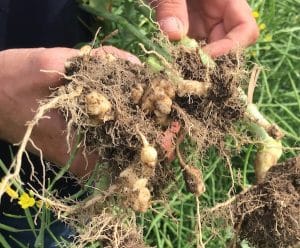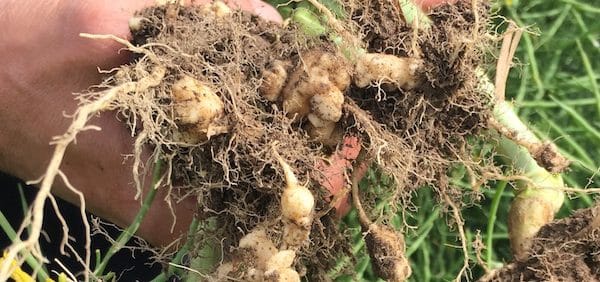Clubroot scouting continues across the Prairies this week, especially in areas where it was just recently confirmed.

How to scout:
To scout for clubroot, start with plants that have obvious symptoms. Look for patches of plants that are ripening prematurely. Often plants growing in the fringe around low wet areas will be large and green and healthy. If these plants are dead instead, this could be a clubroot patch. And because the plants are already dead, the galls may be decayed. In this case, stems may pull out of the ground with no roots attached – which can make clubroot seem like root rot. In this situation, dig down and look for brownish sawdust-like material around where the tap root would be. This is likely decayed galls. DNA tests can confirm this. Read more.
How to manage:
If clubroot is present in a field, prevent the build-up of spores to limit yield loss in future canola fields. To prevent the build up:
1. Deploy a clubroot-resistant (CR) variety as early as possible. (Link to: https://www.canolawatch.org/2017/08/30/seed-understanding-clubroot-resistance-and-the-classification-system/)
2. Control weeds/volunteer canola, as these can promote spore build up in non-canola years in the rotation.
3. Rotate out of canola for at least 2 years.
4. Prevent the movement of spores within the field.
5. Scout for signs that clubroot has spread to other patches or other fields.
Read the more detailed article or go to clubroot.ca for lots more.
